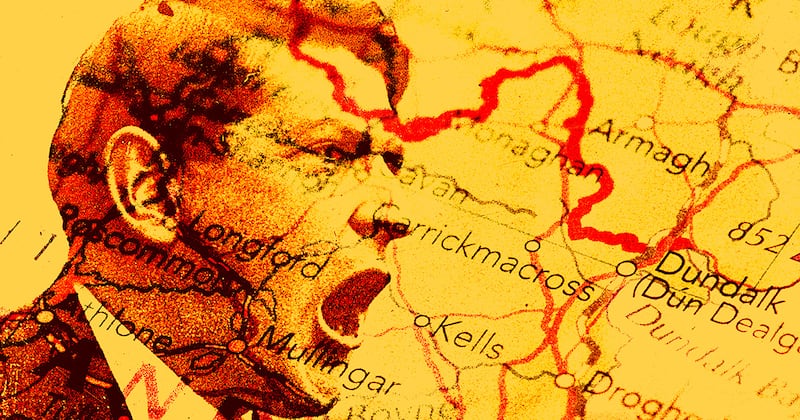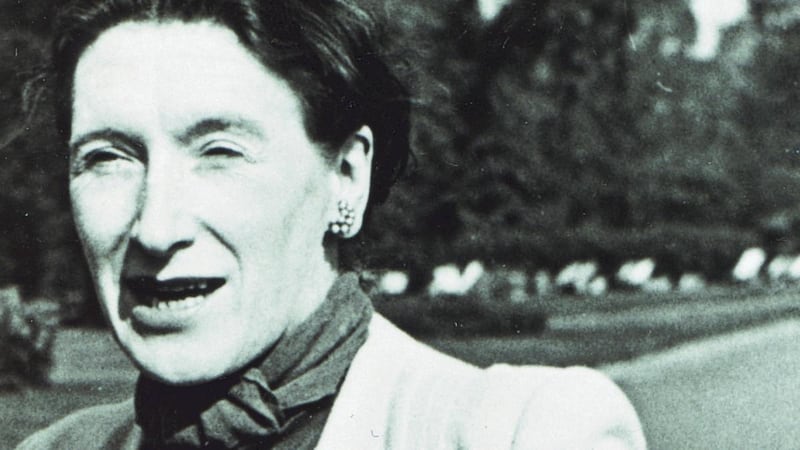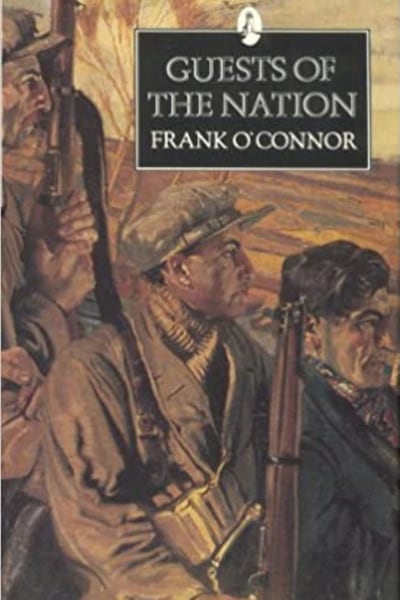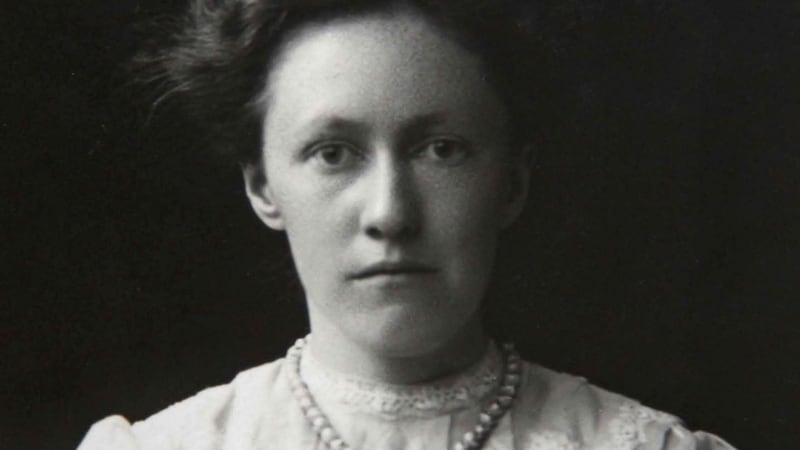Creating a list of Irish fiction dealing with the War of Independence, partition and the Anglo-Irish Treaty has two challenges. The first is the tendency of that fiction to approach big historical events obliquely. The Civil War is an ominous shadow at the edge of the story in the work of O’Connor, O’Flaherty and Jacob. The most influential novel on this list, Bowen’s The Last September, focuses on one young woman struggling to create a future in a doomed old house, while violence rages elsewhere. The heroines of Jacob, Mills and McMenamin set forth into that violent world to make their own way in it.
The second challenge is the wealth of Irish historical fiction dealing with this period in the last quarter of a century. A Star Called Henry (1999) and At Swim, Two Boys (2001) began a new phase of re-imagining these formative times. This new historical fiction sets events in Ireland in the context of a world ablaze during and after the first World War and is represented here by Mills and McMenamin (Emma Donoghue's The Pull of the Stars added the global pandemic of Spanish Flu to this mix to extraordinary effect).
There is a consistent conjuring across the decades of lost opportunities in this tumultuous period, but these novels also offer new perspectives on the past and a glimpse of different futures.


Elizabeth Bowen: The Last September (1929) Vintage Classics, 2015 Bowen's classic exploration of the demise of an Anglo-Irish "big house" during the War of Independence achieves a lyrical balance of melancholy and irony. Significant political and military events happen elsewhere, while the novel chronicles the attempts of the Naylors to maintain their social rituals amid increasingly desperate denial of the world outside. They find their English visitors socially deplorable, and their Irish neighbours lurk armed in the woods.
The Naylors’ orphaned niece, Lois, is the heart of the novel. As the illusion of control over her social domain disintegrates, Lady Naylor clings to the illusion that she can direct her niece towards a life defined by the proprieties of gender and class. Meanwhile, Lois tries to imagine a future for herself, married to the unimaginative British officer Gerald, becoming an artist, doing anything or nothing, intrigued but untouched by the new world outside represented by the revolutionary Connors.
Gerald’s death marks the end of one possible future, while the burning down of Danielstown ends the unsatisfactory life she has lived with the Naylors.
Kathleen Coyle: A Flock of Birds (1930) Out of print since the demise of Wolfhound Press, this is available on loan via Internet Archive A forgotten masterpiece set in 1919, this novel by Derry-born Coyle tackles one of the icons of Irish nationalism, the mother who loses her son to the national struggle. Much of the novel's extraordinary emotional and psychological force comes from the fact that Catherine Munster is grieving a son who has yet to die. The action is set in the terrible interim between the sentence of death handed down to the naive and idealistic Christy and his execution. His solicitor brother Valentine tries to organise an appeal, but the suspense in the novel is all about Catherine's sanity, not Christy's fate. Paralysed by her inability to take in what is about to happen, Catherine "suffered the stillness", and the reader teeters on the verge of a psychotic break alongside her.
Coyle inserts her authorial voice in the form of the family's literary daughter, home from Paris, also called Kathleen. She cites her acquaintance Mr Joyce: "We have a country that is like a sow that eats its own farrow." The phrase reverberates, but the novel quite deliberately focuses on the grieving mother rather than the angry siblings. Catherine manages to stage a show of acceptance for Christy, but she refuses to kneel with the crowd who pray for him as he dies and determines to leave Ireland for France "to be a ghost there. A ghost of all the mothers whose sons had been taken."

Frank O'Connor: Guests of the Nation (1931) Formally perfect, dense with political and ethical complexity, a masterclass in concise characterisation, sometimes funny, and eventually emotionally desolating – Guests of the Nation has been described as the greatest anti-war story ever written. Bonaparte and Noble, low-ranking IRA volunteers, are tasked with guarding 'Awkins and Belcher, working-class British soldiers who have never made it home from the Great War. The unnamed "old woman" of the smallholding is a mother Ireland figure increasingly at odds with what is being done in her name. She develops a maternal bond with the helpful and domestic Belcher, but it is the mutual understanding and friendship between the four men which is at the heart of the story.
O’Connor effectively establishes the tradition of including a glimpse of utopian possibilities that were never to be achieved in the socialist internationalism of ’Awkins, who is certain that all four can be “chums”. In retaliation for British executions of their comrades, Bonaparte and Noble are ordered to kill their hostages, leaving Bonaparte “very small and very lonely. And anything that ever happened me after I never felt the same about again.”

Rosamond Jacob: The Troubled House (1938) Margaret Cullen returns from nursing a sick relative abroad to a Dublin utterly transformed by revolutionary ferment. Rebuilding her relationship with her three sons, she tries to support the eldest, Theo, as events strain his principled pacificism, comes to understand middle son Liam's militancy, and seeks to keep her youngest, Roddy, far from the fray.
The Troubled House is in some respects much more optimistic about the potential for social transformation in this revolutionary period of Irish history than those of her better-known contemporaries. The shadow of the Civil War looms, however, in tragic denouement. By 1938 Jacob and women like her were well aware that the new Irish State was not the republic of which they dreamed, but the novel offers glimpses of alternative futures. Nix Ogilvie, the daring modernist artist whom Margaret befriends and with whom both Liam and Theo are fascinated, is an amalgam of the modern and creative women who helped make the new Ireland but never fitted comfortably within it. In an incident based on the destruction of Dorothy Macardle’s papers in a Black and Tan raid on Maud Gonne’s house, Nix’s startlingly modern paintings are destroyed, but Nix herself survives to paint again.
The focus of increasing attention from students and critics, The Troubled House has long deserved a new edition.
Liam O'Flaherty: Insurrection (1950) Merlin, 1993 O'Flaherty's last novel explores the Rising from the perspective of an accidental rebel. Bartly Madden is on his way home to Connemara to avoid conscription after 18 months' work in a Liverpool armaments factory to save up to marry a girl whose father owns a small farm. The woman and the land, he explains later, are "the same thing". A drink between trains at a slum tavern leads Bartly to a "miserable room" in Amiens Street, robbed of everything, ashamed to go home, with little option except to join the British army after all. He lingers long enough under the portico of the GPO to be seduced by Pearse's rhetoric instead and to listen to the troubles of his fellow Connemara woman, Mrs Colgan, a small, manipulative and desperate version of mother Ireland, who urges him into the GPO to look after her son.
The limpid urgency of O’Flaherty’s prose rushes us headlong with Bartly through events, but there is also ironic detachment. He finds new purpose inside the GPO, but his emotional and impulsive nationalism gets him killed, while the idealistic middle-class and middle-ranking rebel leaders inside the GPO surrender, live, and embody everything that will go wrong with their new republic.

Lia Mills: Fallen (2014) In many ways the novel of the 1916 centenary, Fallen was a (so far) unique experiment in transforming the Dublin Libraries annual read-along to include Belfast in the Two Cities One Book initiative. Mills very much captured the mood of the centenary, processing the events of Easter week through the eyes of one bewildered young Dublin woman, Katie Crilly.
The domestic and interior lives of Dubliners are rendered in lyrical detail, so the subtle encroachment, then sudden explosions of violence in the second part of the novel are incredibly effective. Amid the misery of her brother’s anniversary, petty irritations at her sister’s floral scent and mother’s callousness, Katie and her little niece encounter an armed member of the Citizen Army blocking their entry to Stephen’s Green. Her first reaction is to assume a theatre stunt, then ask him, “Is this real?” Rapidly the horrors that she has only known from her brother’s letters spill on to the familiar city streets, as a woman kneels in Merrion Row and whispers “a prayer where the dead man’s ear should have been”. There is something uncanny in the immediacy with which the novel brings these old ghosts to familiar streets.

Ciaran McMenamin: The Sunken Road (2021) The Sunken Road also explores the relationship between the first World War and the War of Independence, this time from the perspective of the Fermanagh-Donegal Border. The triangle of relationships between Annie, her brother Archie and his best friend Francie keeps the focus of the novel on the intimate and personal destruction wrought by vast historical forces. The dual narrative, moving back and forth between Ireland and France in alternate chapters, has the pace and immediacy of a thriller. The dual storytelling also forces the reader to viscerally experience Francie's trauma: that first war will never be over for it rages on in his head.
McMenamin's rendition of the Battle of Pettigo on the newly/nearly established Border is something of a tour de force. The immediacy of danger, the smell of blood, the tensions on both sides, the speed at which the battle changes are all rendered more compelling by the perspective of Annie. If Archie and Francie's stories share the sense of inescapable tragedy characteristic of early novels of the revolutionary period in Ireland, Annie's escape across the borders of respectability and religion from the stultifying grief and inertia of her home opens a road to other possibilities.
Gerardine Meaney is professor of cultural theory at UCD










